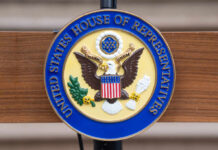
The health of American corporations is a reliable barometer of our nation’s economic stability. Alarmingly, corporate bankruptcies in the U.S. are seeing their fastest surge since 2010, aside from pandemic-related spikes. According to Visual Capitalist’s Dorothy Neufeld and Sabrina Fortin and data from S&P Global, “over 400 corporations have gone under” in 2023. The trend isn’t isolated to struggling sectors either but is widespread — highlighting the actual cracks in America’s economic foundation.
This surge in corporate failures comes after 11 interest rate hikes since last year. Companies are grappling with overstretched balance sheets and mounting challenges, including a 22% annual increase in corporate interest costs compared to the first quarter of 2021. The rising rate environment is particularly punishing for consumer discretionary and industrial sectors, which already shoulder significant debt. Firms such as retail giant Bed Bath & Beyond and mattress industry leader Serta Simmons have folded, spotlighting the vulnerability of even well-known brands.
Visualized: U.S. Corporate Bankruptcies On the Rise https://t.co/cZIYzncqZ6 Interest rates don't have anything to do with this $TNX pic.twitter.com/91RF3Duf01
— Matt Davio (@MissTrade) August 22, 2023
It’s worth noting that 16 companies with over $1 billion in liabilities have filed for bankruptcy this year. The failure of Silicon Valley Bank earlier this year was the proverbial canary in the coal mine, followed by Moody’s downgrading ten small to mid-sized banks. Financial industry experts and conservatives warned that this was a sign of what’s to come, and the current spate of corporate bankruptcies seems to validate that cautionary perspective.
Peter Schiff, CEO and chief economist at Euro Pacific Asset Management, recently tweeted, “The bond market is on the verge of a major breakdown…it’ll crush the loan portfolios of already insolvent banks.” A debt-market meltdown would exacerbate existing challenges, potentially leading to a full-blown economic crisis. These ominous signs echo what many conservative economists have been cautioning for years: that unchecked borrowing and artificially low-interest rates can’t sustain a healthy economy in the long run.
So what’s buffering U.S. corporations from an outright collapse? At least two factors are at play. Firstly, stronger-than-anticipated profits in 2022 have provided some respite. Secondly, approximately 72% of rated U.S. corporate debt has fixed rates, offering temporary relief. Creative debt restructuring strategies, like “extend and amend” activity for certain types of corporate bonds, also provide a lifeline for troubled companies.
However, these are band-aid solutions. U.S. corporate debt swelled during the pandemic, and “eventually this debt will come due likely at much higher costs and with more severe consequences,” as per S&P Global Market Intelligence. Higher interest rates are not just a conservative talking point but a fiscal reality catching up with American businesses.
For the average American, the surge in corporate bankruptcies can mean job losses, reduced consumer choice, and ripple effects that could destabilize local economies. Policymakers would do well to heed these early warning signs.



























